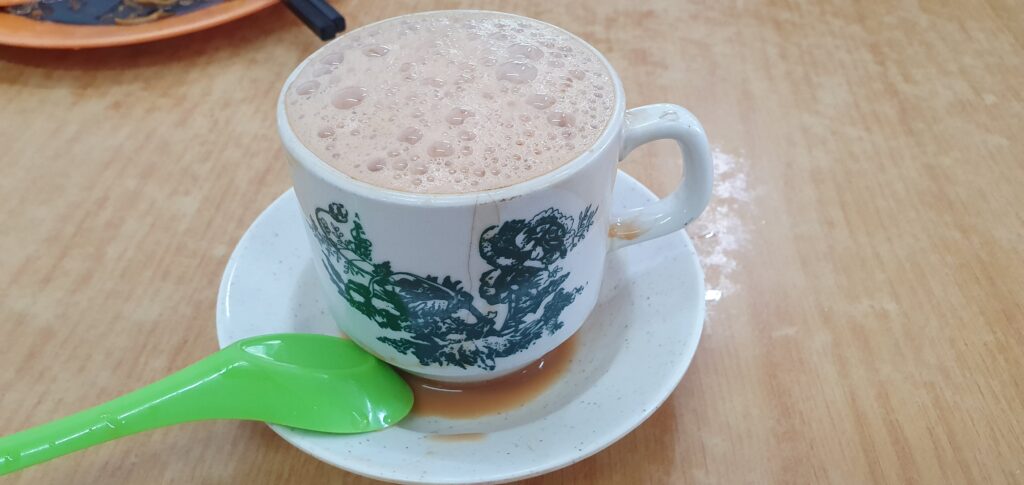the fuel of a nation
This is an appreciation post for the drink that fuels me and this nation — a cup of nanyang tea. I make it almost every morning.
I boil water. I pour it through the tea sock and cup to rinse and warm them up. Then I scoop the tea leaves into the tea sock and pour the hot water into the tea sock, which is now placed over the glass cup. The tea steeps and I remove the tea sock after what feels like roughly four minutes. I quickly wash the tea sock and hang it up to dry for the next day’s work. When I return to the cup of hot tea, I add condensed milk, a dash of milk, and serve. This repetitive ritual that I go through daily provides an anchor of sorts.
I appreciate the story behind nanyang tea too. Above, I wrote about how I use tea leaves to make the tea. That’s a little misleading. The tea “leaves” aren’t really leaves, it’s tea dust. It’s the cheapest form of tea. A byproduct of the delicate loose leaf tea sold in high-end tea boutiques. And I admire the fact that we made a national delicacy out of the lowest grade of tea leaves. Perhaps a delicious reminder to make do with what you have and start where you are.
It’s also a drink that can be enjoyed differently from stalls all around Singapore and Malaysia. I can say that only because every single stall will make it slightly differently. I can’t say the same for Coca-Cola. Sure, it’s a simple drink. Water, tea dust, condensed and sometimes evaporated milk. But the brand of tea dust, the strength of the brew, the amount of condensed milk, or the ratio between condensed and evaporated milk — all of these affect the taste. They help break the monotony that’s often found in Singapore’s copy-and-paste chain restaurants and their syrup-formulated and standardized drinks.

Comments? Text or email me.
2 minute read.
First published:
August 30, 2021
Last updated:
